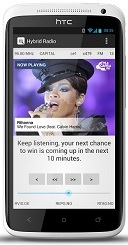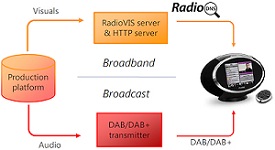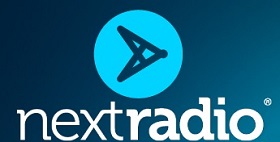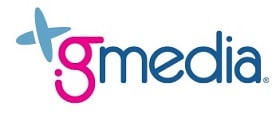Hybrid Radio: Making Your Station Look as Good as it Sounds | Telos Alliance
By The Telos Alliance Team on Sep 18, 2014 10:24:53 AM
 Hybrid Radio: Making Your Station Look as Good as it Sounds
Hybrid Radio: Making Your Station Look as Good as it Sounds
Just when you thought streaming might be the last evolution in the digital journey, along comes hybrid radio which upends everything once again. This disruptive technology forces stations to rethink streaming and begin to develop implementation strategies for hybrid. The rollout is global, although it is proceeding at different stages throughout the world. Hybrid radio works with FM, DAB, DAB+, DMB, DRM, DRM+ and HD.
The momentum is building, both in smartphones and in the digital dashboard. Hybrid radio uses the terrestrial FM broadcast signal for the audio, but uses the web for backhaul of metadata such as: images of the current artist, artist name, song title, traffic, weather information or on-demand content. Hybrid gives listeners the best of both the broadcast and IP worlds.
It turns out that FM has several advantages over streaming. For smartphones, it's about seven times easier on battery consumption, and it doesn't use any of a consumer's bandwidth allocation. For broadcasters, it guarantees quality of service and direct access to listeners.
Listeners have access to all of the visual and text information associated with RDS or the Artist Experience on their smartphones. Additionally, they can easily connect with related websites, be it the station, sponsors, or buy-now functionality. As listeners travel outside of the range of an FM signal, they can automatically (or on demand) switch to the station's web stream.
Smartphones increasingly have the FM chip inside of them activated. The latest models, such as Samsung Galaxy Express 2 LTE also include an FM tuner app with hybrid radio technology enabled. Video demonstrations are available. Other manufacturers are following with chips which have RadioDNS with the RadioVIS application in place. However, there are a few bumps in the smartphone road. Since there is no standard API for the FM tuner on Android, it cannot be easily ported to other phones.
 In the US market, the NextRadio app is rapidly gaining momentum. Speaking at NAB in April, Paul Brenner, Senior Vice President and CTO for Emmis Communications, noted that there are 8,269 FM stations available through NextRadio. It is now being pre-loaded with all Sprint smartphones. As of April, there were 285,000 activated NextRadio apps, with another 2,500 being added daily.
In the US market, the NextRadio app is rapidly gaining momentum. Speaking at NAB in April, Paul Brenner, Senior Vice President and CTO for Emmis Communications, noted that there are 8,269 FM stations available through NextRadio. It is now being pre-loaded with all Sprint smartphones. As of April, there were 285,000 activated NextRadio apps, with another 2,500 being added daily.
With more smartphones having hybrid radio enabled, the ball is in the broadcaster's court. Radio DNS is the middleman that enables the link between the app and your station. Its services include visualization, web linking, program guide, service following and tagging. RadioVIS is used for visualization and web linking, RadioEPG is for program guides and service following, while RadioTAG is for tagging of content by listeners. All services can be geo-located.
The first step for broadcasters is adding your station to the RadioDNS lookup table, which is currently free. Using the visuals which you host is free, as is using the RadioEPG document. If you don't want to do this yourself, there are third-party providers to help.
The EBU technical provides an experimental RadioVIS server for a simple visualization service for EBU broadcasters who want to start and experiment with RadioDNS. A content manager application running on Windows is also available to dynamically update the visuals.
In the US and the UK, G-Media provides its customers with RadioVIS, as well as its content management platform. In Germany, backend-systems.net has a product called MyRadioDNS.com, which is an out-of-the-box CDN solution for broadcasters with high load needs. Backend-systems.net delivers via STOMP, COMET/JSONP and Websocket by default.
In Europe, EBU members which have hybrid radio enabled include: La Premiere (BE), PureFM, Classic21, Musiq3, Swiss Classic/Jazz/Pop and Option Musique. In the United States, the Cox Media Group (CMG) is working with TagStation to enable hybrid radio. Its 47 stations have already completed the initial setup process, and expect to be online shortly.
Telos Alliance has led the audio industry’s innovation in Broadcast Audio, Digital Mixing & Mastering, Audio Processors & Compression, Broadcast Mixing Consoles, Audio Interfaces, AoIP & VoIP for over three decades. The Telos Alliance family of products include Telos® Systems, Omnia® Audio, Axia® Audio, Linear Acoustic®, 25-Seven® Systems, Minnetonka™ Audio and Jünger Audio. Covering all ranges of Audio Applications for Radio & Television from Telos Infinity IP Intercom Systems, Jünger Audio AIXpressor Audio Processor, Omnia 11 Radio Processors, Axia Networked Quasar Broadcast Mixing Consoles and Linear Acoustic AMS Audio Quality Loudness Monitoring and 25-Seven TVC-15 Watermark Analyzer & Monitor. Telos Alliance offers audio solutions for any and every Radio, Television, Live Events, Podcast & Live Streaming Studio With Telos Alliance “Broadcast Without Limits.”
Recent Posts
Subscribe
If you love broadcast audio, you'll love Telos Alliance's newsletter. Get it delivered to your inbox by subscribing below!